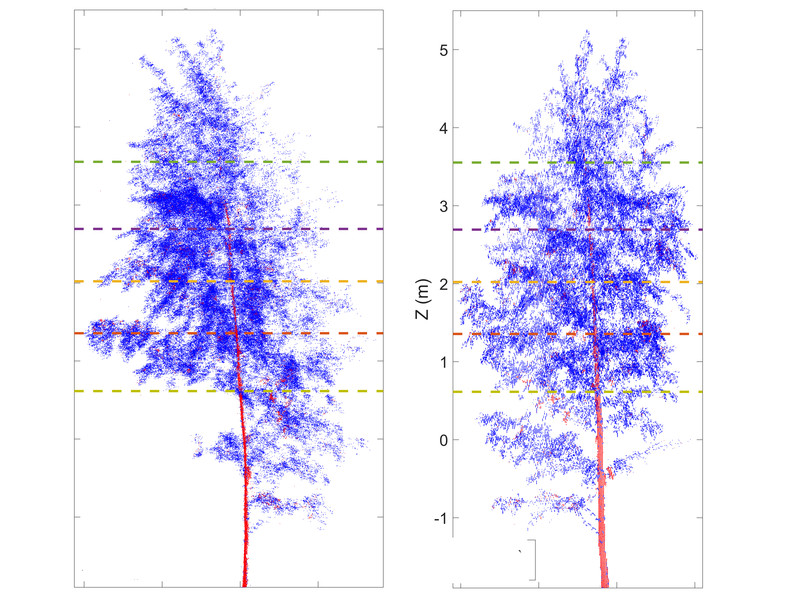People sleep, animals sleep, and maybe even androids sleep. Thanks to LiDAR, we now have proof that trees do too.
In an unexpectedly graceful blog post, scientific researchers at the technological university at Wien wrote about the “day and night cycle” for plants. It turns out that this cycle has been a well documented fact for years, but “studies have only been done with small plants grown in pots, and nobody knew whether trees sleep as well.”
LiDAR offered that proof—using a time-series (a kind of animated gif) of LiDAR scans, a team of researchers were able to show that trees droop their branches during the night.
According to Eetu Puttonen of the Finnish Geospatial Research Institute, “The changes are not too large, only up to 10 cm for trees with a height of about 5 meters, but they were systematic and well within the accuracy of our instruments.”
But this isn’t just one unusually lazy tree. The experiment was run on one tree in Finland and a second in Austria. Both were completed around the solar equinox, and under relatively quiet weather conditions. According to the article at TU Wien, the researchers found that both trees behaved the same way.
“The leaves and branches were shown to droop gradually, with the lowest position reached a couple of hours before sunrise. In the morning, the trees returned to their original position within a few hours. It is not yet clear whether they were “woken up” by the sun or by their own internal rhythm.”
It’s worth asking why it took us so long to complete a study like this.
The mechanism by which plants measure the transition between light and darkness relies on “the water balance of individual cells, which is affected by availability of light through photosynthesis.” It’s so delicate and sensitive that shining a light on a plant to photograph it will affect the results. This is true even in small herbs.
LiDAR, on the other hand, can observe without disturbing the process. It uses infrared light, and only measures for a fraction of a second at a time.
“We believe that laser scanning point clouds will allow us to develop a deeper understanding of plant sleep patterns and to extend our measurement scope from individual plants to larger areas, like orchards or forest plots,” says Norbert Pfeifer of TU Wien.
“The next step will be collecting tree point clouds repeatedly and comparing the results to water use measurements during day and night”, says Eetu Puttonen. “This will give us a better understanding of the trees’ daily tree water use and their influence on the local or regional climate.”






